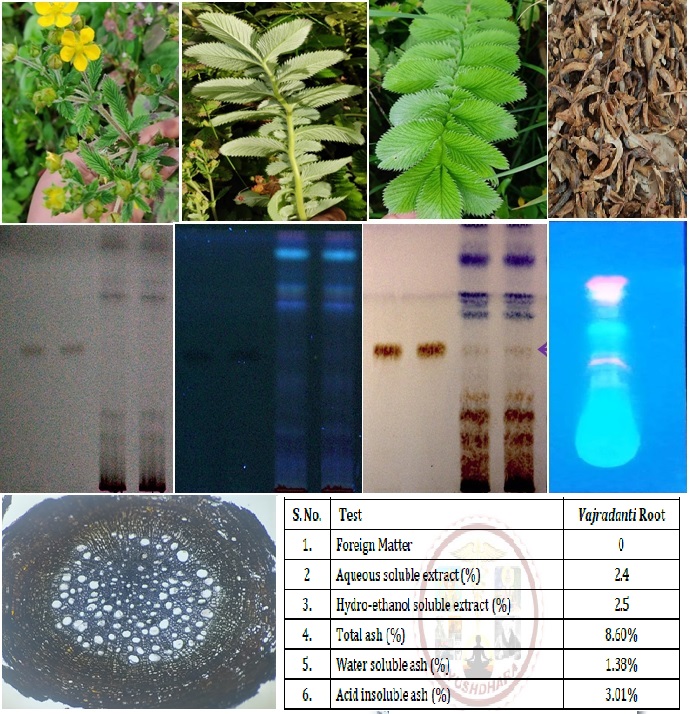Pharmagonostical Analysis and Chromotographical Fingerprinting of Vajradanti (Potentilla fulgens (Wall.) ex Hook.)
DOI:
https://doi.org/10.47070/ayushdhara.v10iSuppl1.1128Keywords:
Vajradanti, Potentilla fulgens, Ethnomedicinal plants, HPTLC, TLC, Phytochemical analysis.Abstract
Poor oral hygiene or tooth disorders are very common and severely agonizing ailment leads to teeth loss or damaging of teeth, so it is the need of the hour to search for a potent drug which can fight this condition. Vajradanti is first described in Ayurvedic text Arka Prakash and Dravyagunakosha. Later in some Ethnomedicinal books Vajradanti is mentioned as potent medicine for Dantvikar, Udarshoola etc. Potentilla fulgens (Wall.) ex Hook. of Rosaceae family is an alpine medicinal plant that is found in temperate Himalaya between 2000-3000m. The root of the plant is of good medicinal value and has been used as folk remedy for treating ailments like diabetes mellitus, gastric problems, peptic ulcers, diarrhoea, cancer, toothache, pyorrhoea, cough, cold and also has anthelmintic property. A detailed pharmacognostical character of its root is not reported still yet. Methods: An attempt has been made to study the macroscopic and microscopic character, physicochemical analysis, phytochemical analysis, and chromatographic studies of its root following standard procedures. Two different extracts of Vajradanti root was used to access the physicochemical and HPTLC analysis. Research work was carried out as per standard operating procedures and specified protocols. Result: Results showed that in physicochemical evaluation aqueous extract 2.4%, hydro-ethanol extract 2.5%, total ash 8.6%, water soluble ash 1.38%, acid and insoluble ash 3.01%. HPTLC results for the quantification of epicatechin in EPF was analyzed for the first time by scanning at wavelength (λmax 366nm) and the quantity of epicatechin present in Vajradanti was estimated to be 0.032% w/w. In phytochemical analysis presence of carbohydrate, protein, glycosides, amino acid, protein in extract of Vajradanti. Conclusion: Vajradanti is a highly potent medicine for oral diseases due to presence of flavanols like epicatechin.
Downloads

Downloads
Published
Issue
Section
License
Copyright (c) 2023 AYUSHDHARA

This work is licensed under a Creative Commons Attribution-NonCommercial-ShareAlike 4.0 International License.


